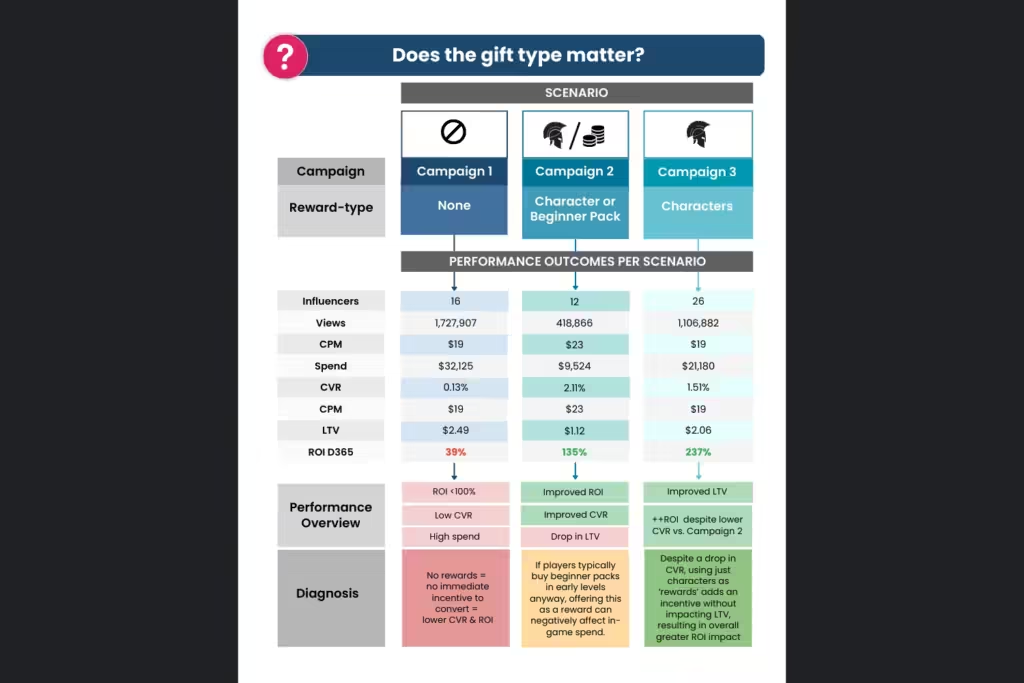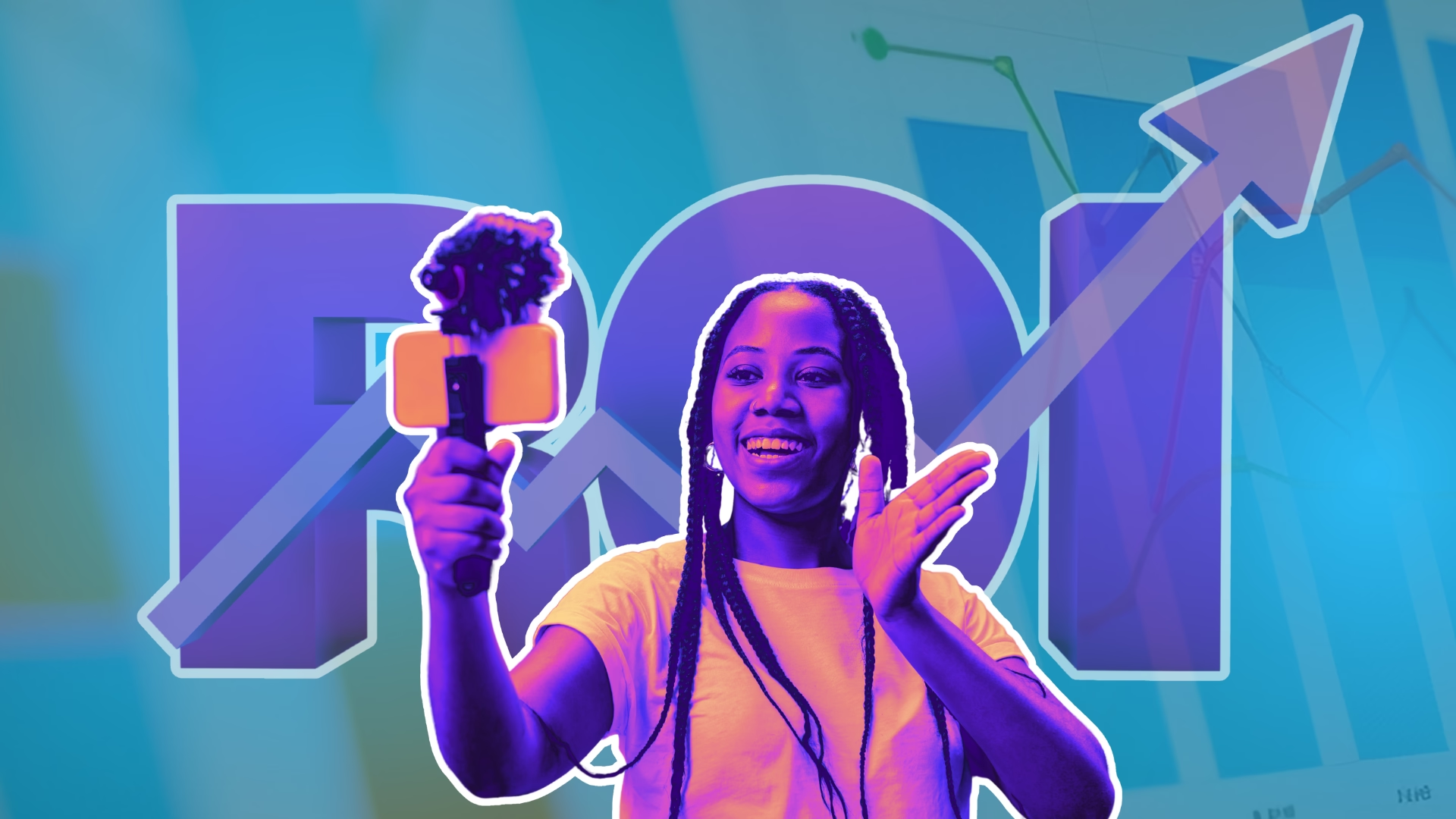How to improve ROI on Influencer Campaigns
Influencer Marketing has become an essential part of the mix for most marketers today. In a saturated advertising landscape with ever-increasing competition, most brands recognise the competitive edge that influencer marketing provides. That said, improving influencer marketing ROI is one of the biggest challenges marketers face today. So what are some tactics and strategies you can use to improve ROI on your influencer marketing campaigns?
There are some fundamental steps you can take to improve influencer campaign performance, such as – adding QR codes, using high-quality visual & sonic assets, optimising talking points and CTAs, and placing single-click conversion links at multiple accessible touchpoints.
Beyond these fundamental steps to improve the performance of your influencer marketing campaigns, there are additional tactics that you can employ to boost conversion rates and ROI when you have performance-related goals.
Leveraging Discount Codes, Gift Packs, Giveaways, and Custom Assets are some advanced strategies you can use to improve influencer marketing ROI. These tactics may require more involvement from your wider product, promotional, monetization, growth teams, and so on, but the impacts they produce are well worth it.
This article breaks down how each of these tactics helps improve influencer marketing ROI, and what the optimal setup for leveraging each of these looks like.
Leverage Coupon Codes, Discount Codes, Gift Packs to Improve Influencer Marketing ROI
Coupon codes and discount codes can improve influencer marketing ROI performance drastically. They effectively boost conversion rates because they not only provide an additional incentive for customers to convert, but also induce a sense of urgency when accompanied by a limited-time offer. Additionally, using unique discount codes per influencer or per vertical can help in tracking, measurement, and performance analysis, as you can identify which specific influencers and verticals drive higher conversion rates and extract key learnings for optimizing your campaign strategy in future iterations.
It’s important to tailor rewards to your specific KPIs. For instance, if you’re a mobile game looking to improve ROI of your influencer campaigns with welcome gift packs, you need to put careful consideration into what your exact ‘offering’ will be- whether that’s starter packs of in-game currency, free characters, or something else.
Some kinds of rewards might produce good initial installs but may impact your LTV in the long term. You need to ensure that the kind of rewards that you’re using are not only effective for your short-term KPIs but also for your long-term KPIs. You don’t want to compromise your long-term revenue for short-term conversions.
So how do you know what works best? A/B test different kinds of gift packs and offerings to figure out what works best and what has the best outcome in terms of long- and short-term impacts.
The image below shows the results from one of our mobile gaming clients. We ran a series of influencer marketing campaigns, testing a different gift pack offering in each campaign with the objective to increase influencer campaign ROI.

The first campaign did not include any sort of gift pack, and we could clearly see the CVR and ROI were well below the target. In the second campaign, we ran an A/B test with a bonus character and a welcome pack of coins (in-game currency).
With this tactic, we found that although the CVR and ROI increased, the LTV actually decreased, since the welcome packs were typically purchased by new users in early stages of the game anyway since they were not perceived to be as expensive, so offering these as a reward was actually resulting in a drop in the customer LTV over time, and compromising long-term revenue and profit.
For the third campaign, we only offered a bonus character – and we found that although the % increase in ROI was not as high as the second campaign, it was still significantly above target, and more importantly, the LTV remained above target too. So the key takeaway was clear – rewards and gifts CAN improve influencer marketing ROI, but the exact offering needs to carefully planned so that it doesn’t impact long-term revenue.
Improve Influencer Marketing ROI with Contests and Giveaways
Like discount codes, contests and giveaways provide an additional incentive for audiences to convert. More specifically, the type of reward offered through the contests or giveaways can be a particularly strong motivator.
Rewards that are specifically tied to the influencer themselves often work well because they offer a unique experience that wouldn’t be available anywhere else. They make the influencer’s community more likely to engage because of the para-social relationships they feel with the influencer, and participating and winning a personalized item or experience related to the influencer makes them feel closer to the influencer themselves.
However, more valuable rewards like iPads, Amazon vouchers, or other kinds of high-value rewards in cash or kind, like for instance, a car, or even rewards in the form of experiences, like a holiday to a specific place or free tickets to a sporting event or a cultural event, can be really good incentives to encourage people to participate because these are higher-value items that the ordinary consumer wouldn’t spend on on a whim. It makes them more likely to participate if the reward is something they wouldn’t ordinarily spend on without a second thought.
The video below is from an influencer campaign we worked on with Wooga for June’s Journey, which included a giveaway of a ‘June’s Journey Diary.’ Beyond promoting the game itself, this campaign promoted the launch of the Diary and is a great example of how unique, distinctive, and novel ‘branded items-’ something that feels unexpected- can also be effective for driving engagement on influencer campaigns – particularly if more expensive items are not within the scope of the campaign budget.
On the other end of the spectrum, the video below is from a campaign we worked on with Candivore, which involved a giveaway where viewers could win a free trip to the Euros. This was obviously more expensive and complex to orchestrate, however, the giveaway reward was a clear ‘one-in-a-lifetime’ type opportunity- something that most consumers would rarely spend their own money on as an impulse.
Some more examples of our clients who have used giveaways to improve influencer marketing ROI:
There is often a concern that these kinds of incentives may not result in long-term revenue, but this is where the setup of the giveaway or contest matters too.
For retail or DTC brands looking to improve influencer marketing ROI through giveaways, including terms and conditions like ‘Spend X amount of dollars’ or ‘Buy X number of items’ alongside a tempting reward can help boost the overall customer LTV in a short period of time. However, data also shows that it’s important to make the rewards seem ‘realistic and achievable’ to actually maximise consumer participation.
In mobile games, since game mechanics are inherently designed to hook and retain players early on, it is often just getting them to convert and allow some early game progression that is the biggest barrier. Once you get players to play a few levels, it often becomes a ritual or ‘addictive,’ or they inherently enjoy the game (provided the game itself is well designed and monetises well) – which keeps them playing even after the terms and duration of the giveaway have lapsed and if they didn’t win.
Specifically if influencer marketing contests and giveaways are tied to specific ‘retention-based’ milestones – like Reach Level 50, Collect 100 gems, etc., this can be a strong way to familiarise audiences with the game and get them hooked for the long term – it’s essentially reeling them in with some external incentive beyond the game, and getting them hooked to the game itself, so they stay even when that external incentive no longer exists.
Leverage Custom Assets to Improve Influencer Marketing ROI
Although custom assets refer to essentially leveraging the influencer’s likeness and personal brand to create an item within your game, product line, or site that is essentially tailored to that specific influencer, there are several ways this can be implemented.
For a mobile game or video game, for example, this could be creating an in-game asset, skin, item, or even a challenge or event that’s tailored to a specific influencer – the video below is an example from a campaign we ran with Social Point for the launch of Top Troops, which included the creation of both, a custom character AND a custom challenge based around MrBeast.
For a fashion brand, the equivalent could involve creating a specific product line or a collection tailored to the influencer or co-created with the influencer. For D2C brands, this could involve creating a single product tailored to the influencer. While creating something like this obviously involves a lot of involvement and resources from the wider team, not just your influencer team, the ROI is well worth it. That said, the timelines on these kinds of processes can also be quite extended, so you might need to prove the concept before you actually create something fully custom.
A lower-investment form of custom assets is simply taking an existing asset or product line and slightly changing it to make it appear as if it’s customized to the influencer.
For example, this could mean creating a custom landing page. For D2C or fashion brands, this could involve creating a custom landing page with an influencer’s picks, where the influencer selects 10 to 12 specific items from your preexisting product catalogs, making it appear like a curated collection when it is actually preexisting. Alternatively, it could involve renaming a product with a quirky name aligned to the influencer’s personal brand, making it seem like a custom collaboration.
For gaming brands, this could simply involve changing the color of an existing in-game item or changing the name of an asset to make it appear customized to the influencer. Since the primary audience is new users, they typically won’t know that this is just an existing asset that’s been slightly tweaked.
By making these small tweaks to existing assets, you can still leverage the benefits of custom assets without creating something entirely from scratch. Once you see the impact these custom assets can have on conversion rates and ROI, you can scale this approach and implement a higher degree of customization over time.
Final Thoughts: How to Improve Influencer Marketing ROI
The performance of Influencer marketing campaigns depends on a number of factors- from the planning stages of defining the target audience profile, securing the budget, and selecting influencers, to the latter stages of optimising the ad creatives, messaging, and offering.
However, leveraging tactics like discount codes, giveaways and contests, and custom assets can really elevate the offering, add additional incentives for users to convert, and induce urgency to those conversions. Across any advertising format, these tactics can be really effective in improving conversion rates, however, combined with the persuasive power and differentiation of Influencer-driven content, they can deliver campaigns that are extremely effective in producing real sales impact and improving ROI.
It’s also possible to use a combination of these tactics to improve influencer marketing ROI. This Simulcast campaign we ran with our client Plarium for RAID: Shadow Legends is a great example of two tactics in play simultaneously. The campaign involved both, a ‘gift-pack’ and ‘giveaway element, each serving their own role in the wider funnel and the long-term KPIs. The giveaway component with $5000, Game Consoles, Smartphones, Amazon Gift cards, and in-game loot up for grabs added an initial incentive for users to install and play the game, whilst the ‘gift-pack’ element offering two free characters was intended to help users gain some rewarding progression when they start out – enough to get hooked to the game.
Ultimately, different tactics will have different results for different brands, so it’s important to test and iterate to figure out which tactics work best to improve influencer marketing ROI for our specific product and brand.
